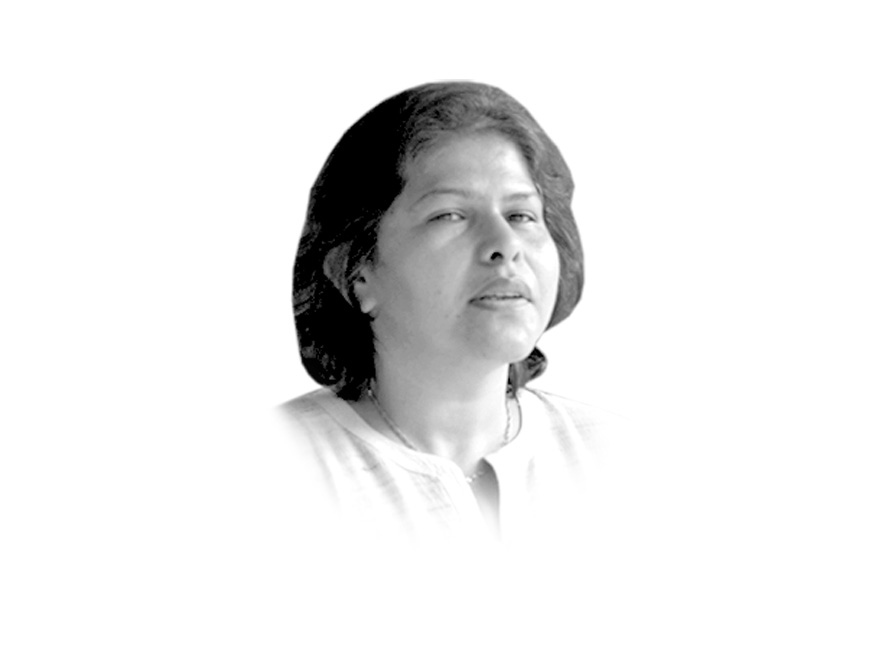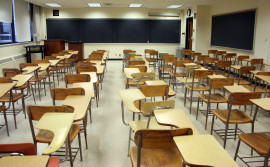
The magazine, Hello!, has just published a special edition for Pakistan highlighting a list of ‘Hot Hundred’ — profiles of 100 Pakistani icons ranging from brilliant writers, playwrights, novelists, polo players, fashion designers, actors, singers, models and many others. The message is simple: Pakistan is not only about terrorists and extremists but also about very promising people, who can compare with their counterparts in any part of the world. One is, however, intrigued by the Disneyland or Hollywood characteristic of this Pakistan — very clean and tidy, English-speaking, educated, urban and upper and upper-middle class.
This Pakistan is not complicated either because it doesn’t want to bother with the uncleanliness of poverty or the chaos of nationalisms and beliefs. So, why be surprised to see that all the bad Pakistanis in the recently released and much-applauded film, Waar, are lower middle class, while all the good ones are physically modern, speak English and can even be seen in one scene with goblets? This progressive Pakistan has an even simpler and easy to manage politics. We need to build a dam to progress and anyone that opposes it has to be a foreigner (preferably RAW) agent. And we shouldn’t even bother with the fact that a lot of opposition to a large dam is because those displaced as a result of the Mangla and Tarbela Dams were never fully accommodated or compensated, or that there are serious issues of inter-regional distribution of water. But why get into such complexities when you can simply boil it down to poverty or the ill will of the under-privileged and the poor. A good-looking country can’t deal with poverty. However, given the ambition and hunger for strength and power of the upcoming upper-middle class, why waste time with reducing poverty and why not just not look at the poor and poverty.
Recently, at a conference on terrorism, I heard a Pakistani police officer, now working with an international donor agency, talk about how the poor had greater propensity towards violence. A similar conclusion was also made by an Islamabad-based NGO a couple of years ago, linking food insecurity with militancy. The conclusion was that there was violence in Fata and Balochistan because of scarcity of food. The analysis did not even bother to explore the fact that the level of violence in these places is not proportionate to the amount of hunger. Also, what about focusing on the negative role played by the state? But then, why should we forget that simple conclusions are appreciated by even multilateral aid donors. The conclusion that sectarian violence is basically class warfare makes for donor-friendly analysis. Why bother explore that the source of sectarian evil in south Punjab, for instance, was selective manipulation of the poor by some elite groups and families to sort out differences with their rivals. The state machinery and some prominent families had combined their strength during the 1980s to create militancy and encourage sectarian hatred. It certainly doesn’t pay to argue that the issue of terrorism is far more complex than poverty or the poor people.
Since it is all so simply poverty driven, we can also have simpler solutions that aid donors and NGOs can easily fund. The other day, an English-speaking icon of a pir family lectured me on why festivals were good for alleviating poverty of the poor since such events create opportunities. So, instead of opening industries, creating job opportunities, increasing meaningful education that would increase employment opportunity of an individual, we would probably like him to set up temporary kiosks on festivals to earn small change. Perhaps, it is not necessary to bring structural changes in alleviating poverty because why invest in the enemies of the state. Catching up on this formula, donors also find it easy to invest their taxpayers’ money in rebuilding shrines or holding random youth workshops. The former activity is to invest in a reliable class and the latter to help this class sort out their sense of guilt in keeping the poor deprived.
Returning to the issue of terrorism/extremism, it is easy to believe that the poor and his frustration generate all of this because it is difficult for the upper-middle class to admit that their attitudes and perception of religion are equally problematic and contribute to radicalism that, in turn, feeds extremism. A week ago, the imam of the mosque in Westridge, one of Rawalpindi’s posh neighbourhoods, was lecturing people about how Muslims must not respond to greetings by a non-Muslim with a ‘Wailaikumus Assalam’. The mindset created thus can be found in the views of those that claim to be moderate Muslims. They speak English and wear religion on their sleeves. However, their person is seemingly both moderate and modern. This is like Dubai where the Western-liberal and traditional-Eastern culture seems to come together. What is missing in this narrative is the story of how the powerful in Dubai then finance violence elsewhere in the name of protection of their belief system or usurps rights of the dispossessed and not allowing them to rebel.
The new elite in Pakistan are radical in their thinking. They often experiment with these views by manipulating the poor who then tend to get blamed for the violence. The upper-middle class is equally connected with the radical elements which are then used to help the powerful exploit resources. The common denominator between the religious clergy, which is also now part of the elite, and other powerful segments of the state and society is that none want to empower the dispossessed. Tragically, in watching the picture of extremism and violence, we never get to see and recognise the real faces. In this Disneyland of ours, it is so convenient to pin it all on the poor.
Published in The Express Tribune, December 26th, 2013.
Like Opinion & Editorial on Facebook, follow @ETOpEd on Twitter to receive all updates on all our daily pieces.
COMMENTS (16)
Comments are moderated and generally will be posted if they are on-topic and not abusive.
For more information, please see our Comments FAQ





















































Thank you Ms.Siddiqa for writing another brilliant article! Hope it helps open up the eyes of our country's 'movers & shakers' who have sadly brought nothing but inertia and regression for our countrymen and society over the decades.
@Sindhi Pakistani: Dude that was sarcasm ! in the article. no one is accusing you of being RAW agent.
FAITH , UNITY & Discipline. .. Discipline Can be Achieved and Unity can be Promoted. Faith will follow. Who is going to do this? . the leaders who select themselves or the Army. we have tried everything but nothing seem to be working. What is wrong with this nation? or is it a nation?. are we all confused! . do we know what we want? does a person who can not read write English know what he wants ? . What are our priorities ? is it peace and stability or food security.Social scientist will tell you there are more than three classes , may be more than seven. Some people especially who are disconnected from ground realities make it so simple.
It is complicated and making it sound simplistic is not the right attitude ! this is what this article is about.
Man I had really hoped this article was about Disneyland
We need to build a dam to progress and anyone that opposes it has to be a foreigner (preferably RAW) agent. I am also foreigner agent (in Pakistani terms), I mean to say I am opponent of Kalabag Dam. It is very easy to be recruited in RAW. You have to just speak against Kalabag Dam (interests of the largest province). Very interesting....
@Author, I would say there will always be class war. This is because of
disproportionate distribution of wealth. disproportionate distribution of opportunities for lively hood. Restriction / Limited / No access of opportunities for lively hood. Restriction / Limited / No access for basic HUMANE Requirements. Wrong / degenerative knowledge dissipation. Restricted / NO access for Learning or Inquisition.The First Four should have been the primary responsibility of Elders, When I say Elders it means the People in Govt/Power. Including the various Elders of the Jirgas of various tribes. The last two should have been the primary responsibility of Elders of the society like the poets , artists, social workers and most importantly the priests/imams/moulvis.
I feel the failures started from the Jirga elders, down the line. Nobody new what they were doing. This was because they did not have a vision for there people. They only had a vision for there belief.
Pakistan ,Disneyland,Wonderland of Alice's or Alexes.....name it what you will....so long tribalism as fountain of hate remains, fractional distillation on ethnic lines will divide us . Recent currency of word "auquat" in hate speech says it all : "Teree Auquat Kia Ha ?" Every one harbours seeds for everyone ,everything Pakistani. We compete with others never with ourselves as a Nation....
Well written as always!
Brilliant !!
I think failure of state to provide the very fundamental level of governance divide this nation and become a heaven for people who can promote their interest.
great article!
While I can understand the conclusions drawn in the op-ed, it would have been good to see a bit deeper analysis on the social structure in Pakistan that is contributing to exploitation and manipulation of lower socioeconomic classes.
Very good point
Dear Ayesha, unless your article has been edited this is not one of your best as you circle around the problem and fail to identify root cause of these ills. In the same vein, you unfairly proxy Dubai for Saudi funding of extremism. Ayesha I am used to reading would say it as it is, this article went around circles playing the class populist trump card and failing to identify elephant sitting in our drawing room.
I agree with what you said above. There is a complete disconnect between elite and and rest of classes of Pakistan.
Pakistan does not even look like a country any more with three different parties ruling different parts of the country. Media and artists are lost , they just want fame and money , will shun Pakistan on first available opportunity. Poor Pakistanis have nothing better to watch, the govt has even blocked you tube while their children can stamp all over the world.
To bilawal Sindh Politics is superhero's fantasy, Nawaz and his family is running govt like a family business. KPK govt is not acting fast enough.
The army will have to do the job it is meant to do and politicians will need to empower people. If this does not happen Pakistan not going to survive.
In this Disneyland, everyone is beleaguered among problems. who will find the way out from this terrible situation..? Army is busy in operations and democratic leaders want peaceful settlement where as both have been failed in their cause, police and rangers are busy in operation since long but target killing is still going in karachi, parliamentarians are corrupt at their end showing ridiculous collections of resources, no think tank to formulate the policy, rivalry among major institutions and much more like that. the only weak element is a poor common man he will have to suffer because of his poverty.